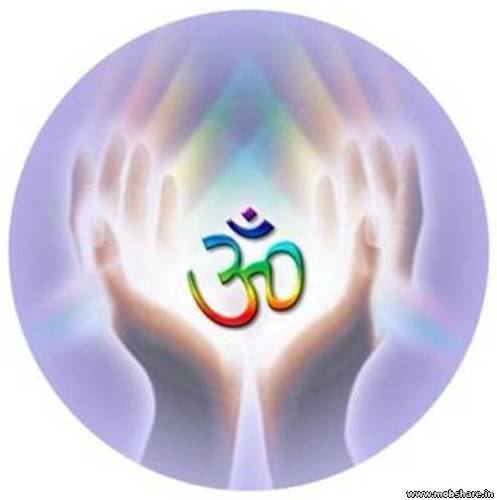- Christianity: 2.1 billion
- Islam: 1.5 billion
- Secular/Nonreligious/Agnostic/Atheist: 1.1 billion
- Hinduism: 900 million
- Chinese traditional religion: 394 million
- Buddhism: 376 million
- primal-indigenous: 300 million
- African Traditional & Diasporic: 100 million
- Sikhism: 23 million
- Juche: 19 million
- Spiritism: 15 million
- Judaism: 14 million
- Baha'i: 7 million
- Jainism: 4.2 million
- Shinto: 4 million
- Cao Dai: 4 million
- Zoroastrianism: 2.6 million
- Tenrikyo: 2 million
- Neo-Paganism: 1 million
- Unitarian-Universalism: 800 thousand
- Rastafarianism: 600 thousand
- Scientology: 500 thousand
The Classical World Religions List
There are twelve classical world religions. This is the list of religions described most often in surveys of the subject, and studied in World Religion classes (some of them more for historical rather than contemporary reasons):- Baha'i
- Buddhism
- Christianity
- Confucianism
- Hinduism
- Islam
- Jainism
- Judaism
- Shinto
- Sikhism
- Taoism
- Zoroastrianism
- Baha'i
- Buddhism
- Confucianism
- Hinduism
- Islam
- Judaism
- Orthodox Eastern Church
- Protestantism
- Catholicism
- Shinto
- Taoism
After many centuries, with the increased Western awareness of Eastern history and philosophy, and the development of Islam, other religions were added to the list. Many Far Eastern ways of thought, in fact, were given the status of "world religion" while equally advanced religious cultures in technologically less developed or pre-literate societies (such as in Australia, Africa, South America, and Polynesia) were grouped together as pagans or "animists," regardless of their actual theology. It's true that by the standards applied at the time, the Far Eastern religions Westerners encountered were often in a different category altogether than the religions they classified as pagan. One can not directly compare, for example, the local beliefs of the Polynesian islands of Kiribati during the 1500s to the organizational, political, literary and philosophical sophistication of Chinese Taoism during the same period. But one could certainly question whether Japanese Shintoism, as an official "world religion", was theologically or spiritually more "advanced" than African Yoruba religion, which was classified simply as animism or paganism.
During the 1800s comparative religion scholars increasingly recognized Judaism, Christianity, Islam, Hinduism, and Buddhism as the most significant "world religions." Even today, these are considered the "Big Five" and are the religions most likely to be covered in world religion books.
Five smaller or more localized religions/philosophies brought the list of world religions to ten: Confucianism, Taoism, Jainism, Shinto and Zoroastrianism.
Beginning around 1900 comparative religion writers in England began to take note of the Sikhs which had begun to immigrate there from India (part of the British Empire at the time). Sikhs, if mentioned at all, had been classified as a sect of Hinduism during the first three hundred years of their history. But after the influential British writers began to classify Sikhism as a distinct, major world religion, the rest of the world soon followed their example.
Baha'is are the most recent entrant to the "Classical" list. The religion is only about 150 years old. On their official website, Baha'is claim 5 million adherents worldwide, established in 235 countries and territories throughout the world. While most comparative religion textbooks produced during this century either ignore them or group them as a Muslim sect, the most recent books give them separate status and often their own chapter. Baha'is have achieved this status partially through their worldwide geographical spread and increasing numbers, and partially by constantly insisting that they are indeed the "newest world religion."
Hinduism: The highest figure we've seen for Hinduism (1.4 billion, Clarke, Peter B., editor), The Religions of the World: Understanding the Living Faiths, Marshall Editions Limited: USA (1993); pg. 125.) is actually higher than the highest figure we've seen for Islam. But this is an abberation. World Hinduism adherent figures are usually between 850 million and one billion. More.
There are an estimated 9 to 12 million Roma (Gypsies; also "Rroma") in the world, concentrated in Europe, but also in North America, Australia and elsewhere. There is clearly a distinct set of Roma religious beliefs and practices, which scholars frequently describe as Aryan/Indian/Hindu in origin with an overlay of local (esp. European) religious culture (often Catholic). But the Roma are primarily classified as an ethnic or cultural group. Many clearly have a strong ethnic identity as Roma and a self-identified religious identity as Catholic or Protestant. The Roma illustrate how arbitrary the dividing lines between ethnicity, culture, and religion can be.













No comments:
Post a Comment